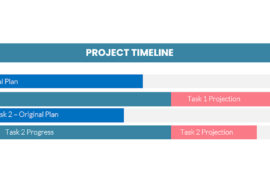 It’s ongoingly amazing to me. I visit companies virtually every week that have projects that are suffering. The story about why these projects are not working is often the same, sometimes different but what is almost universal is that companies on a fairly regular basis get involved in projects that are out of their depth. When I ask these companies how they selected these projects, I’m often greeted with a blank stare.
It’s ongoingly amazing to me. I visit companies virtually every week that have projects that are suffering. The story about why these projects are not working is often the same, sometimes different but what is almost universal is that companies on a fairly regular basis get involved in projects that are out of their depth. When I ask these companies how they selected these projects, I’m often greeted with a blank stare.
The fundamental problem is that most organizations have no process for determining the appropriateness of taking on a project or not. The decision is much more complex than doing a resource levelled analysis of all combined projects but that also is often not done. There are several aspects to be considered here and I’d like to outline a few of them here.
Fundamentally your decision breaks down to a couple of main areas: Capacity, Benefit and Opportunity Cost.
Capacity refers to your ability to actually deliver a particular project and the answer to that may not be as simple as you might think. There are some obvious factors to consider of course. For example, do you have the resources and the skills required to deliver the project? Are those resources currently involved in other projects? Resources are more than just people although people, of course are key. It also includes office space, money, materials, access to the appropriate equipment and more.
Capacity also refers however, to something more fundamental. Do you, for example, have the organizational model to support certain types of projects? For example, your IT-type firm might have done dozens of successful $10,000 projects and have access to hundreds of other resources for a project that might be much larger. However, the odds are that you don’t have a business model established that would support a million dollar project regardless of how many other programmers you know. The simple infrastructure demands of a million dollar project are simply heavier and more complex to manage than most smaller-project firms are ready for.
Capacity might also include an ability to manage or mitigate risk. A firm that had always worked on low risk projects might not have the structure or financial or skill depth required to be able to effectively function in a high-risk project.
In the cases where your capacity is not up to where it needs to be to assure a successful project, it’s worthwhile to consider a joint-venture with an organization that does have that capacity or even passing on the project altogether.
The second area to consider is Benefit. It’s not enough to say that a project can be done. A responsible project manager should consider if it should be done. What will be the return on investment for this project to the organization? What benefits will the organization realize from the successful completion of this project and conversely, what are the potential side-effects to this organization of the project being unsuccessful?
Cost/Benefit analysis is often useful here and while you’re doing such an analysis it’s worthwhile to consider the different project risks you thought about while doing your thinking about capacity. What will be the benefits for example, if a particular area of scope or functionality, which you’ve identified as high risk, must be abandoned? Also, you’ve got to factor in time. Will the expected benefit be reduced if the project is late? Often in the commercial software development world, there is a window of opportunity that has been identified by marketing that, if missed, would severely reduce the value of the tool being developed. You should be weighing that against the risk of project delay while looking at capacity.
Finally, there is an opportunity cost to be considered. Opportunity cost is the value that would have been realized if you did something else with your resources. If you’ve been looking at your high-tech investments lately and wistfully thinking of the luscious earnings of a 4% government bond that you could have invested in, you know what I’m talking about.
In the project world, you’ve already looked at whether you have the capacity to do a project and what it’s potential benefit is, but you’ve also got to look at what else you could be doing with those resources that might deliver an even greater benefit. Perhaps, for example, an organization might realize much greater total value from the successful completion of 4 or 5 smaller and low-risk projects than from the successful completion of 1 very large but high-risk project. Or, perhaps the allocation of a small number of resources to a smaller but low-priority project will put a larger and more beneficial project at risk. We recently had to suspend work on a project that was due to complete in the next 3 months that we really, really wanted in order to ensure the on-time delivery of a much larger and much more important project. It was a tough call on a tough day but one that everyone agreed would deliver better overall value to the company. A good project manager must be able to point out to management the potential projects that could be successfully completed with the resources required for whatever you are doing.
Everything we’ve discussed here has a major assumption and that is that you have established a system for evaluating the feasibility of projects in the first place. It’s a phase, which perhaps seems obvious as we talk about it but in fact, is often absent. Perhaps some project managers feel they are not given the opportunity to not take on a project or perhaps the notion of refusing a project would be considered negative or career limiting to some. If you haven’t got an environment where a project can be considered before it must be adopted, it’s worth organizing one.
I believe the project selection phase is critical and, as an executive myself, I think that a project manager who returns to me to say that they’ve considered our project capacity, the potential benefits and opportunity cost of what we’re proposing and is concerned over what taking on this project will do to the company, rates high in my book.




